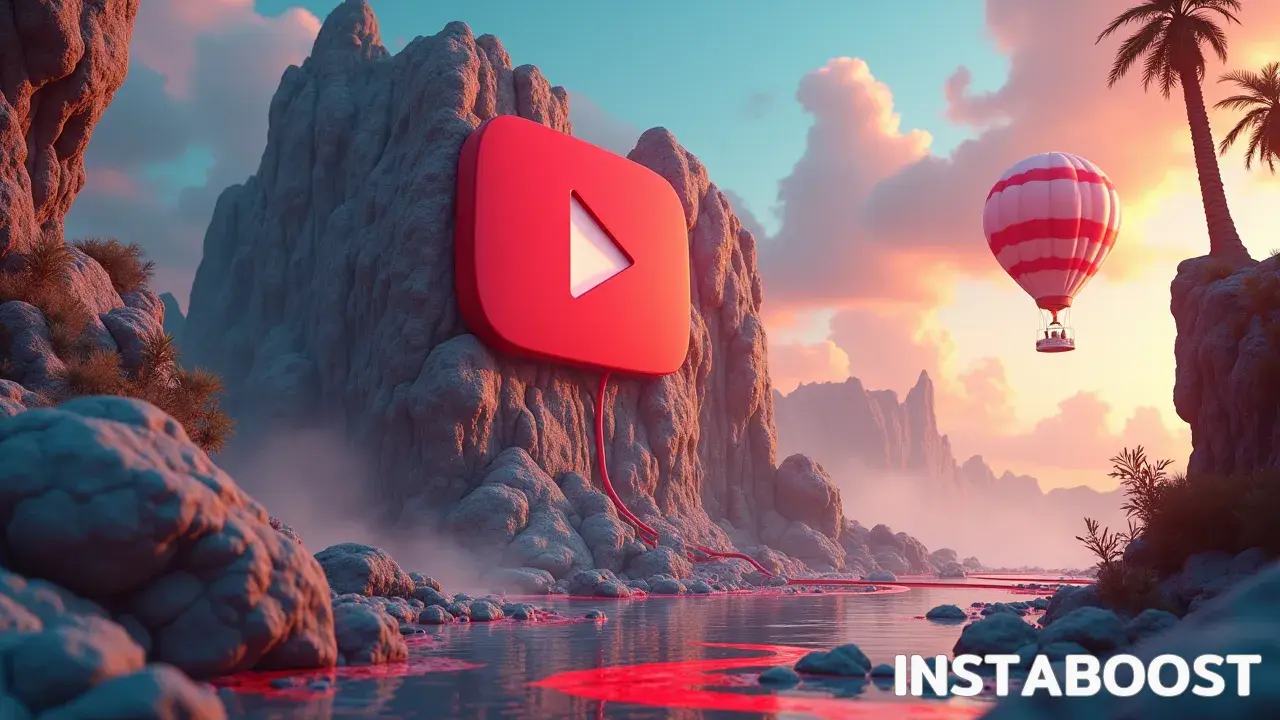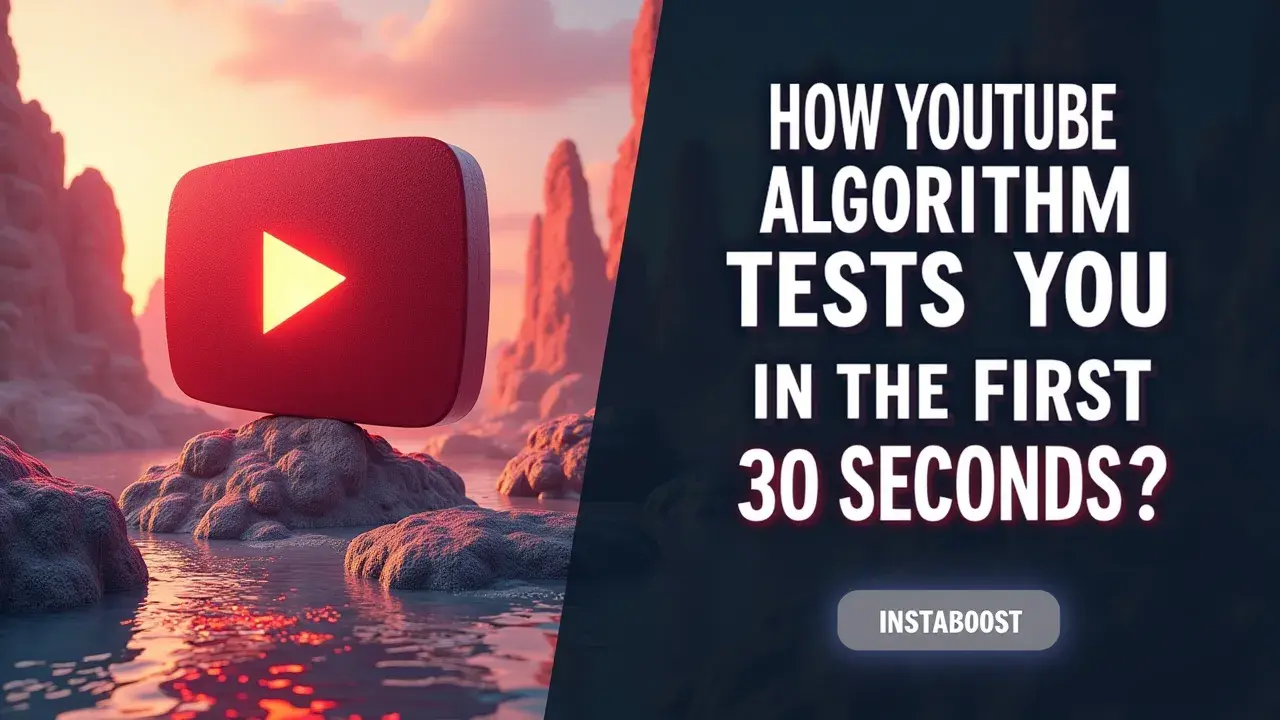How Does the YouTube Algorithm Test Videos in the First 30 Seconds?
Early viewer behavior strongly shapes how the YouTube algorithm recommends a video. Watch time, swift drop‑offs, and immediate interactions in the first 30 seconds signal relevance and quality, influencing broader distribution. If viewers stay engaged, avoid skipping early, and show interest, the system gains confidence to recommend more widely. Designing an opening that quickly sets context and delivers clear value is the smart path to stronger recommendations.
The High-Stakes Opening: Why the First 30 Seconds Matter
YouTube’s algorithm isn’t a passive system that simply decides who sees your videos; it’s more active than that, almost like someone testing out what works right away. As soon as you upload, YouTube starts watching how people respond, especially in those first 30 seconds.
If viewers stick around, maybe leave a comment or two, or skip around in the video, that tells YouTube a lot about whether people actually want to see more. It’s not really about getting a bunch of clicks at the start – it’s about whether you can keep someone interested once they’re there. Every video has to go through this quick, initial check where the algorithm looks at things like watch time and whether people lose interest early.
If viewers stick around, maybe leave a comment or two, or skip around in the video, that tells YouTube a lot about whether people actually want to see more. It’s not really about getting a bunch of clicks at the start – it’s about whether you can keep someone interested once they’re there. Every video has to go through this quick, initial check where the algorithm looks at things like watch time and whether people lose interest early.
If your video holds up, YouTube is more likely to recommend it to others or show it higher in search. Actually, a lot of what’s discussed in effective YouTube marketing comes back to this same idea: grabbing attention at the beginning isn’t enough; what matters is whether you can keep it, right from the start.
This way of testing videos is something you can learn to work with, whether you’re building a channel like INSTABOOST or simply hoping more people find what you make. Those first 30 seconds end up shaping a lot more than you might expect.
This way of testing videos is something you can learn to work with, whether you’re building a channel like INSTABOOST or simply hoping more people find what you make. Those first 30 seconds end up shaping a lot more than you might expect.

Breaking Conventions: How Real-World Testing Beats Theory
What actually got us better results was letting go of all that pressure to follow “best practices” and just trying things the way they made sense to us. There’s so much talk about getting your intro exactly right, with the perfect hook, but after a while I noticed YouTube doesn’t really care about those boxes being checked. Instead, the algorithm seems to notice what people actually do in those first thirty seconds – whether they stick around or leave. One time, we skipped the usual intro and went straight into something unexpected, and right away, there was a bump in how many people kept watching.
The algorithm picked up on that and started showing our video to more viewers, almost in real time. Meanwhile, some of our most carefully edited intros – the ones that were supposed to be “correct” – ended up losing people before we even got to the main point. It made me realize that YouTube is much more interested in how people really react than in whether you’re following a script. Every upload is a bit of a test, and sometimes the thing that ends up working is what you tried on a whim. That’s probably why small channels can suddenly do well if they manage to grab attention quickly, even if they’re not doing everything by the book. I remember seeing, almost as a side note, that more subs, more visibility really did seem to go hand-in-hand, but it still all came down to how you hooked people in those first moments.
If you want to get a sense for how YouTube judges your video in the beginning, it helps to think less about rules and more about what would make someone you know feel like watching more. I’ve found that it’s mostly about paying attention to what people are actually responding to, and being willing to let go of old advice when it stops making sense.
Turning First Impressions Into Lasting Engagement
It isn’t really about the tool you’re using – it’s how you put it to work. When YouTube shows your video to someone for those first 30 seconds, it’s not about following some intro formula you picked up online. What actually makes a difference is giving people enough right away so they know what to expect, the way it matches the mood they’re looking for, and a clear reason to stay. YouTube is always watching what viewers actually do, not whether you ticked every box from an expert checklist. That’s why it helps to pay attention to your audience and try out different ways of opening a video.
For example, you might share a detail most people don’t know, ask a question that makes someone pause, or show a quick moment from real life behind the scenes – anything that feels true and makes people want to keep watching. The main thing isn’t just whether someone is still there after half a minute, but whether they want to see what comes next or maybe even leave a comment. Oddly enough, there are even things like a simple way to get likes that some creators mention, though the real impact comes from understanding your own audience.
If you’re using YouTube for your business, like we do at INSTABOOST, it’s important to look at actual patterns in your audience retention, keep experimenting with your openings, and see how your changes affect things. Over time, those little adjustments start to matter, and you end up with videos that don’t just start strong, but have more to offer once someone sticks around.
When Algorithmic Metrics Don’t Tell the Whole Story
I’ll admit, my engagement numbers look pretty good – my mom watches every video. It’s easy to spend a lot of time studying those first seconds, flipping through retention graphs and reading analytics reports, trying to find some clue that might help with the YouTube algorithm. But after a while, I realized the numbers don’t always show the whole picture.
Sometimes a video looks great at the start, with solid retention, but it doesn’t actually reach new people or pick up any real steam. The algorithm gives your video a chance, but it doesn’t stick around if there’s no real response from viewers. What seems to matter more is what people actually do – if they leave a comment, share it, or even watch something else you made. There are all kinds of theories out there, like ways to support your YouTube growth, but a nice retention curve looks good on paper, and it still doesn’t mean you’ve figured out what’s working.
Honestly, I’ve learned the most from the videos that didn’t take off, because they show me what the real viewers – not just the algorithm – are interested in. It’s not about guiding people down some perfect path; it’s about getting them interested enough to watch because they want to. If you end up tweaking every detail hoping for better stats, it’s worth remembering that the numbers only tell so much. The rest is harder to see – whether someone actually cares, whether they come back on their own, even if, at first, that’s only your mom clicking. Everything else is harder to measure, and sometimes I think that’s the part I’d rather get right.















